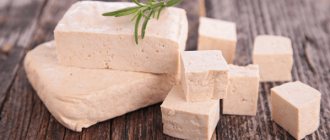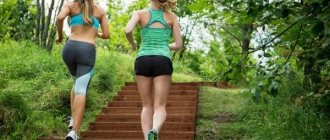Reconstruction of knee ligaments is a common reason for patients to visit a traumatologist. Getting such an injury is more common among young people leading an active lifestyle and athletes. The cause of joint damage is considered to be increased stress and excessive movement. Less commonly, injury occurs as a result of a fall or blow. Patients with such injuries complain of severe pain and a sharp decrease in motor activity. Only timely therapeutic measures guarantee a complete cure and the absence of complications during the recovery period.
joint
joint
Sprained knee ligaments are considered one of the most common injuries. The problem is especially relevant for athletes. Until recently, injuries of this nature could mean a premature end to a sports career. Some anatomical features also contribute to the development of pathology. The main reasons that knee reconstruction is required after a torn ligament are:
- increased physical activity;
- engaging in strenuous sports;
- falls, blows, other injuries;
- excess weight;
- wearing high-heeled shoes.
Depending on the specific cause of the damage, specialists at Dr. Glazkov’s clinic prescribe effective treatment that allows you to get rid of unpleasant symptoms once and for all.
Anatomical features
From a medical point of view, knee sprains require recovery due to the severe muscle spasm that occurs immediately during the injury. Damage to any of the bones will lead to the development of joint disease. Some injuries immediately manifest themselves as unbearable pain. But it also happens that a person continues to lead an active lifestyle, ignoring alarming symptoms, thereby aggravating his condition. Treatment in this case will be longer; it is difficult to guarantee a 100% positive result even for the best specialists. Therefore, if the slightest symptoms appear and suspicions that recovery is required after a sprained knee joint, it is better to immediately contact Dr. Glazkov’s clinic in Moscow. Here, patients will be given an accurate diagnosis and, based on the data obtained, qualified treatment will be prescribed.
Doctor
Doctor
If you have such signs, you should immediately make an appointment with a specialist. Inaction will worsen the situation and make treatment longer and more difficult. During the diagnosis, doctors at Dr. Glazkov’s clinic will find out the cause of the disease and select qualified therapy, taking into account the characteristics of a particular patient.
Healthy dance: how to increase the elasticity of ligaments?
Home » Articles » Healthy dance: how to increase the elasticity of ligaments?
The last centimeters are not allowed to achieve the desired splits, and luxurious dance movements come out crooked and askew? All this is the tricks of our insufficiently flexible and elastic ligaments - the stumbling block of all dancers and the main enemy of productive creative development. Therefore, today we will figure out how to improve the situation.
Anatomy of ligaments - how it works
Ligaments are flexible bundles of tissue that consist of collagen and elastic fibers:
Collagen. They provide strength to the ligament, connect bones and give stability to joints. Virtually no stretch.
Elastic. They make the joint mobile: the more elastic the ligament, the greater the range of motion the joint can make. With high elasticity, the fibers painlessly stretch to the desired state and provide us with free movement.
! You shouldn’t think that only elastin is important for dancing - after all, it is collagen that helps fibers recover after stress and protects us from the main “dance” injury - joint sprains.
In most people, the ligaments are weak. The exception is people with congenital elevated levels of elastin, children with an unformed motor system, and those who have been involved in sports for a long time and have managed to stretch themselves with constant exercise.
The main reasons for low flexibility:
- Lack of physical activity. If a person was not active most of the time, the ligaments did not need to stretch.
- Lack of water. Water nourishes connective tissue and accelerates the formation of collagen and elastin proteins.
- Poor nutrition. Salty and fried foods destroy elastin, make ligaments stiff and retain fluid in the body, disrupting healthy water balance.
- Bad habits. Under the influence of alcohol, uric acid salts - urates - are formed in the body. They are slowly eliminated from the body and deposited in the joints: they make the ligaments stiff and inflame the connective tissue. And nicotine causes spasm of blood vessels: it disrupts the nutrition of connective tissue, inhibits the production of collagen and elastin.
How to increase the elasticity of ligaments?
Proper nutrition for accelerated formation of elastin and collagen:
- Vitamins A, C, E, D, F: animal and fish liver, nuts, citrus fruits, vegetable oils, fish oil, green vegetables.
- Minerals iron, copper, zinc: chicken and beef liver, seafood, lean meat, eggs, beans.
- Anthocyanins and luteins: carrots, egg yolks, spinach, green tea, berries.
- Sports supplements: collagen and elastin.
Basic warm-up:
Heated up. Before starting exercises, gently warm up your joints with your hands.
Rotations. Start by warming up your joints - slow rotational movements of your feet, knees and hip joints with the widest possible amplitude.
Bending. Slowly bend and straighten the joint, holding the final positions.
Ankle exercises:
- Walk on your toes, heels, inner and outer sides of your feet - 15-20 minutes.
- Sitting on the floor with your legs extended, pull and pull your toes towards you - 15-20 times in 3 approaches.
- Place your legs into the rubber band and spread your feet, pulling it 15-20 times in 2 sets.
- Repeating the previous exercise, cross your legs in an elastic band and spread your feet to the sides to stretch the inner surface of the ankle - 10-15 times.
- Jump rope – 30-50 times.
- Walk on small pebbles and sand to increase joint mobility.
Exercises for knees:
Leaning your back and buttocks on the wall, spread your legs shoulder-width apart and slowly squat 10-15 times.
Do smooth lunges to the side, slowly transferring the load to one bent knee. Try to bend your leg as much as possible. 15-20 times.
Lunge forward, bending your knee at a 90-degree angle. Hold the lunge and stretch your body straight down, pressing your palms into the floor. Do 5-10 lunges in 2 sets. 10-15 times.
Take the bent leg back and use your hand to pull the ankle extended in the toe towards the buttock. Try not to move your leg forward and to the side, hold for 1-2 minutes.
Sitting on the floor with your legs extended, rotate your legs outward and hold in this position for 4 counts - 10-15 repetitions. Do the same with turning inward.
Exercises for hands:
- Regularly squeeze a rubber ball or expander with your hand - 20-25 times.
- Turn your hands with your palms up, make slow waves with your fingers inward and outward - 15-20 repetitions.
- Slowly pull your working hand towards the inside and then the outside of your arm - half a minute at a time.
- Place your palms in a “prayer” position and squeeze them 15-20 times.
- Join your palms in a “prayer” behind your back, preferably at the level of your shoulder blades, hold for 20-30 seconds.
If you want to stretch your ligaments as effectively and safely as possible and improve your body flexibility, we invite you to personal stretching classes in our pole dance Studio 1366! Thanks to the individual format, you will fully concentrate on training in a cozy environment, and an experienced trainer will be able to take into account all the characteristics of your body and select the most suitable set of exercises for you.
Read further:
8 Rules for Effective Stretching
How to do the splits quickly? How to get a flexible back and body plasticity? Take your time, listen to your body and work on yourself regularly. Below are eight rules for good stretching for the splits and for the whole body, how to organize training, where to start, and how to do it truly effectively. We actively use all these rules in stretching classes in our studio in Moscow.
Stretching for beginners: how to prepare your body for stretching?
Self-confident, flexible, cat-like grace – this is exactly how everyone imagines an ideal woman. That’s why the fair sex can’t do without stretching!
Making an even split - how to develop joints?
Today we will talk about how to develop our joints so that the splits are neat and even.
Severity and recovery from a knee sprain
Typically, therapists diagnose damage to several ligaments at once. Then other structures of the knee, for example, the meniscus, also suffer. The internal collateral ligament and the cruciate ligament located in front are especially often injured. Based on the intensity of symptoms and the course of the rehabilitation period, several degrees of damage to the knee joint are distinguished. In this case, recovery from a sprained knee ligament also follows a different pattern.
- Mild degree. Diagnosed with minor injuries. Pain and discomfort go away on their own within 1-2 weeks. Additional therapeutic measures are not required for this clinical picture.
- Average. With such damage, it is already difficult for the ligaments to maintain integrity. Characterized by noticeable stiffness of movement and incessant aching pain when trying to bend and straighten the leg. For sprained knee joints, recovery takes longer; treatment is delayed for 1-2 months.
- Heavy. A ruptured knee ligament takes a long time to recover from. It is characterized by severe pain, up to a state of shock. Complete stiffness or, conversely, looseness of the kneecap appears.
Severe damage is often accompanied by internal bleeding due to rupture of blood vessels and nerve fibers. Also, this stage of severity may be accompanied by ruptures of muscle tendons or their complete separation from the bone.
Ways to strengthen ligaments and tendons
To avoid injuries to ligaments and tendons, they need to be strengthened and “nourished”. Moreover, this must be done simultaneously in several directions. This complex includes:
- Balanced diet.
- Special preparations.
- Physical exercise.
Diet for ligaments
Good nutrition will perfectly strengthen the ligaments, make them strong and elastic, which will protect against accidental injuries. What you should pay attention to in nutrition. Such nutrition should become a lifestyle; only in this case can one hope for good results. It is also important to give up unhealthy foods and monitor your weight.
Weight normalization
Proper nutrition means normalizing body weight. Extra pounds create additional stress on the musculoskeletal system, including ligaments. It should be remembered that excessive dieting can also lead to negative consequences.
A person’s diet must contain fats, proteins, and carbohydrates, that is, the diet must be balanced.
Prohibited and permitted products
The consumption of foods containing preservatives and dyes, which interfere with the normal absorption of calcium and phosphorus, also negatively affects the musculoskeletal system. The body does not receive these important elements through food and begins to extract them from the musculoskeletal system. As a result, ligaments and tendons suffer.
It is advisable to exclude all these foods from the diet; instead, you need to eat those that contain large amounts of vitamins C, E, B12. After all, they are simply necessary to strengthen tendons and ligaments. Vitamin E is found in large quantities in foods such as:
- carrot;
- parsley;
- rose hip;
- sea buckthorn;
- wheat sprouts;
- gray bread.
And the required amount of vitamin C can be obtained by including citrus fruits, tomatoes, cabbage, sweet peppers, kiwi, currants, and gooseberries in your diet.
Collagen and proteins
An important component for connective tissue is collagen. Thanks to it, the tendons become elastic and can easily cope with loads. Collagen is contained in dishes that are prepared on the basis of gelatin - jellied meat, jellied meat, jelly.
Eating foods such as chicken eggs, liver, and beef will be very useful for strengthening ligaments and tendons.
They contain vitamin D and essential amino acids. An equally important product is fish. The fats it contains help protect tendon fibers from various overloads. Don't forget about dairy products, because they are a source of calcium, necessary for bones and joints.
Preparations for strengthening ligaments and joints
Often, the amount of nutrients and vitamins that a person receives with food is not enough to strengthen the musculoskeletal system. In this case, it is necessary to take care of additional nutrition for ligaments, joints and bones, which dietary supplements can provide. They are dietary supplements that are taken with food.
Dietary supplements are not medications and cannot solve radical problems, but they are very effective for preventing diseases and strengthening joints, bones and tendons.
In addition, supplements have a number of advantages over traditional medications. Dietary supplements contain only natural ingredients, have a minimum of side effects, and are not addictive. In addition, strengthening ligaments with the help of dietary supplements will cost less than treatment with medications. Preparations that are intended to strengthen connective tissue, joints and bones may contain:
- chondroitin;
- glucosamine;
- collagen;
- vitamins.
The most popular drugs for the health of joints and ligaments are dietary supplements containing chondroitin and glucosamine. The complex action of these two substances will effectively protect and restore damaged areas of ligaments and joints:
- Dietary supplements with chondroitin are excellent chondroprotectors; they protect and strengthen joints, cartilage, ligaments, and tendons. Since chondroitin is a substance produced by the body itself, there are absolutely no side effects.
- Dietary supplements with glucosamine have a positive effect on the metabolic processes occurring in connective tissue and on its structure. Since the active substance of this drug is part of the cartilage, bones, and skin of blood vessels, it has a complex effect on the entire body. Dietary supplements with collagen are a must-have drug for strengthening ligaments. In addition, they stop the inflammatory process, provide additional nutrition and protection for the ligamentous-tendon complex.
Dietary supplements may contain only one component, but most often the supplement contains two or three active substances, for example, glucosamine with chondroitin or collagen with vitamin C. Calcium, vitamin D, and other vitamins and minerals should be taken as auxiliary drugs to these dietary supplements.
Special exercises
In addition to proper nutrition and the use of dietary supplements, special exercises must be performed to prevent sprains. They are needed to provide a static load on certain ligaments or tendons.
The effectiveness of these exercises was proven at the beginning of the 20th century by the famous strongman Alexander Zass. He was far from a major athlete, but the way he broke chains and bent metal bars in the arena was amazing. Iron Samson (as Zass was called) believed that all strength lies not in muscles, but in tendons and ligaments.
He even developed a special set of isometric and dynamic exercises with chains, a barbell, and a bag of sand. Today many people have heard about this complex.
The feasibility and effectiveness of exercises to strengthen ligaments is an obvious fact. For example, using resistance bands and dumbbells is good for the arms. You can also perform exercises on the horizontal bar, push-ups, or handstands. Ligaments in the lower extremities can be trained by jumping rope or squats.
Computer tomogram
Computer tomogram
Sometimes it is enough for a traumatologist to use only one of the above methods to accurately determine the degree of tissue damage and prescribe qualified treatment. In severe cases, the patient may need surgery to repair knee ligaments. This is a safe procedure that can effectively eliminate problems with lower limb mobility. Next, the patient is recommended a list of activities and procedures necessary to speed up the rehabilitation period.
Treatment and rehabilitation after knee sprain
Therapy begins immediately after the patient’s admission to the hospital of Dr. Glazkov’s clinic. Depending on the severity of the patient’s condition, doctors choose the optimal treatment regimen. Today, rehabilitation of sprained knee joints is carried out using the following methods:
- Surgical intervention. It is used if the patient has a complete rupture of the ligaments, and the situation is further aggravated by instability of the knee joint. This is perhaps the only case when conservative treatment methods are ineffective.
- Anesthesia. To relieve pain, the patient must be prescribed an intramuscular injection of an antibiotic.
- Immobilization and cryotherapy. To minimize the load on the injured limb, the traumatologist may recommend applying a splint. Cold compresses are also widely used in traumatology.
- Puncture. It is carried out if, during a joint rupture, blood enters its cavity. This is necessary to avoid suppuration, which can cause sepsis.
The patient undergoes knee ligament restoration after surgery under the supervision of experienced specialists, so you should not be afraid of surgical intervention, because in some cases this is the only opportunity to completely restore motor activity and return to a full life and sports career.
Why do you need to strengthen ligaments and tendons?
Sprained or torn ligaments and tendons are a fairly common injury. To get it, you don’t have to lift weights, dance or do heavy physical activity. You might simply stumble and sprain your foot, or lift a heavy bag of groceries in the supermarket.
As a result, partial or complete rupture of the fibers occurs, which can lead to various complications and even loss of some functions of the leg or arm.
And if for an ordinary person such an injury is associated with many inconveniences, then for an athlete it completely marks the end of his sports career.
To prevent this from happening, it is necessary to strengthen the ligaments and tendons. Moreover, everyone needs to do this, especially those who, due to their occupation, are forced to withstand heavy physical exertion.
Strengthening ligaments and tendons is also necessary for athletes. You should not think that cast muscles will save you from spraining or torn ligaments. The fact is that during physical activity, muscles grow much faster than the ligamentous-tendon complex can adapt to it. An imbalance occurs, which leads to injury. Therefore, it would also be useful for athletes to know how to strengthen ligaments.










